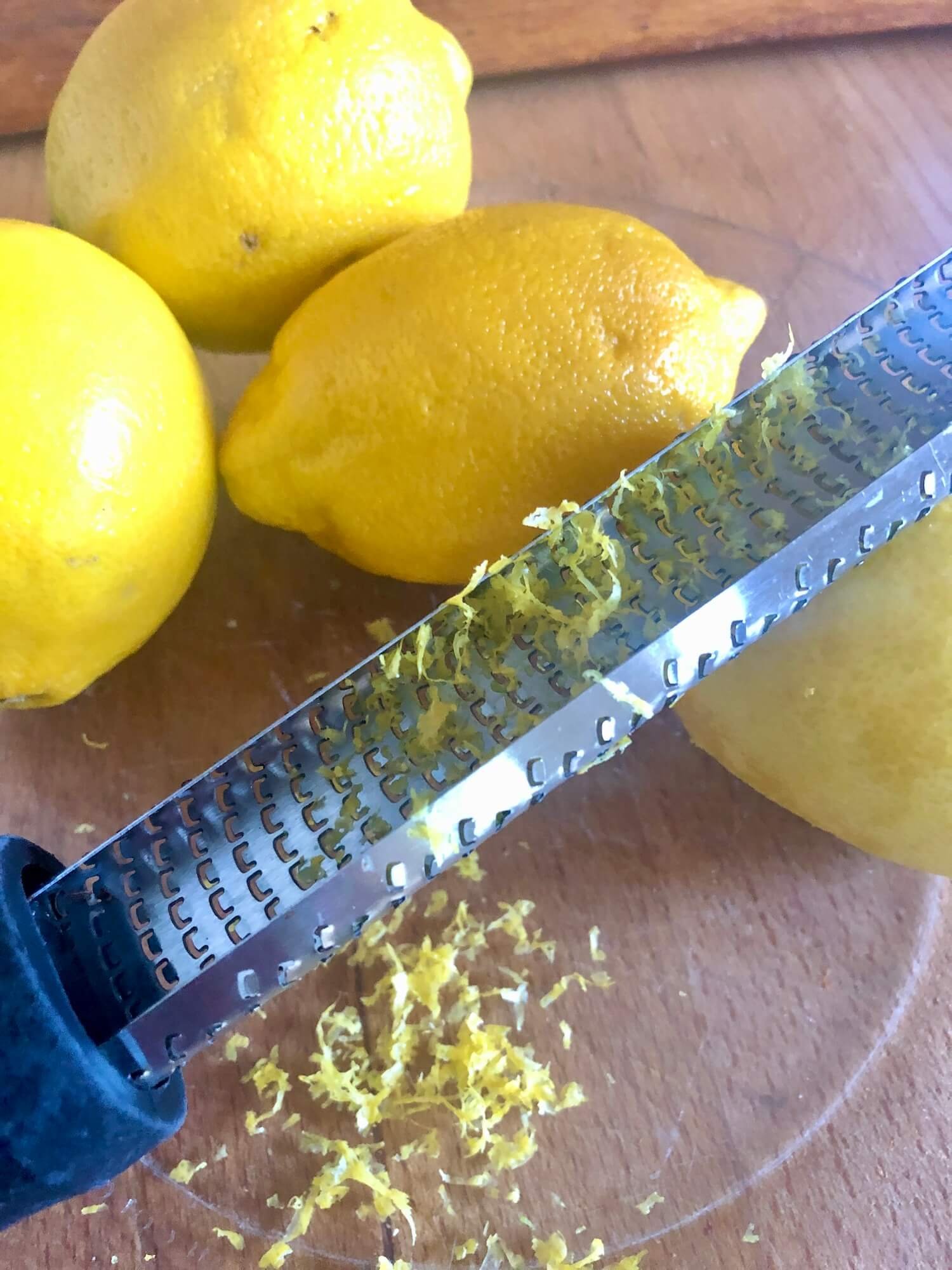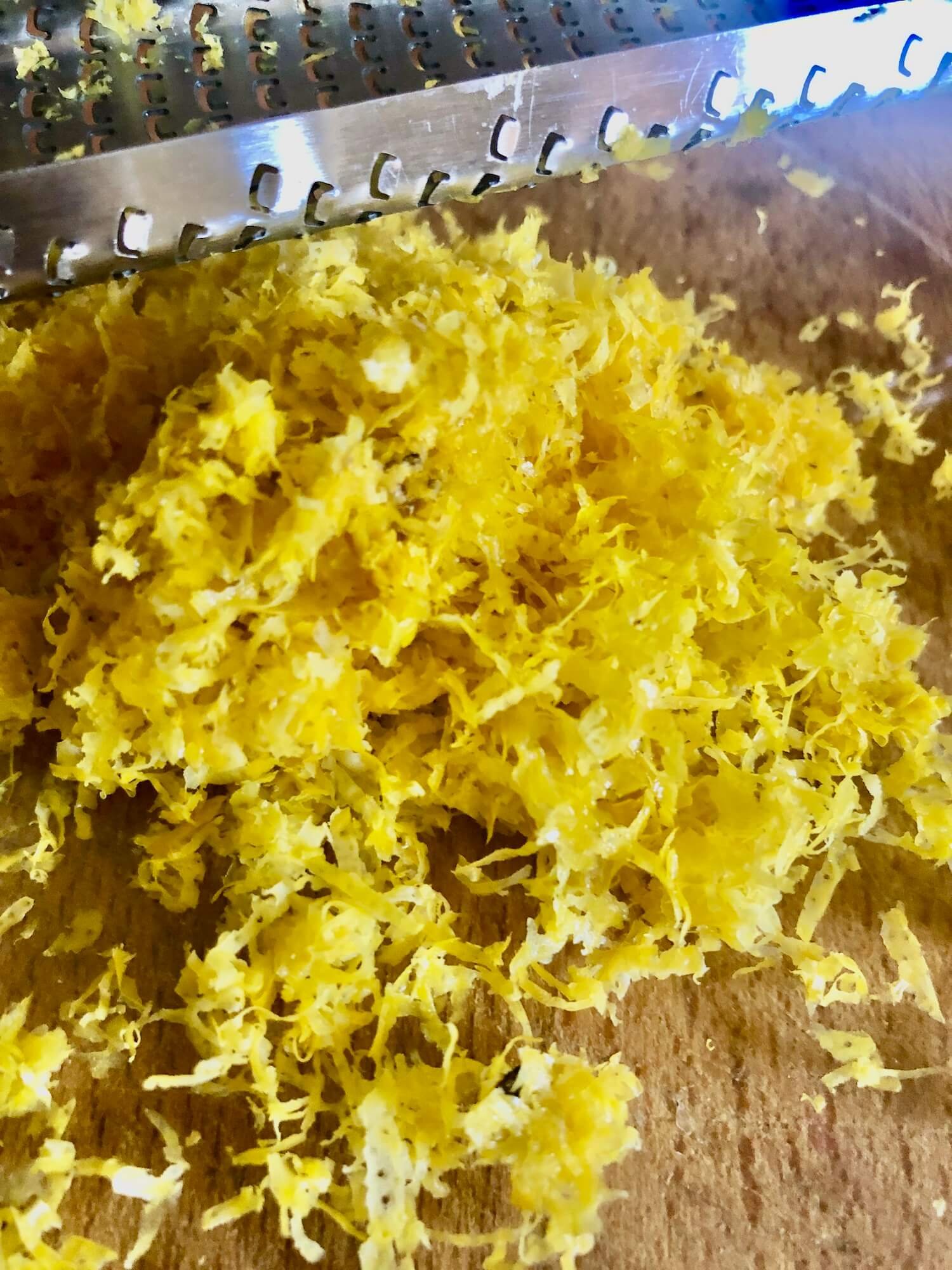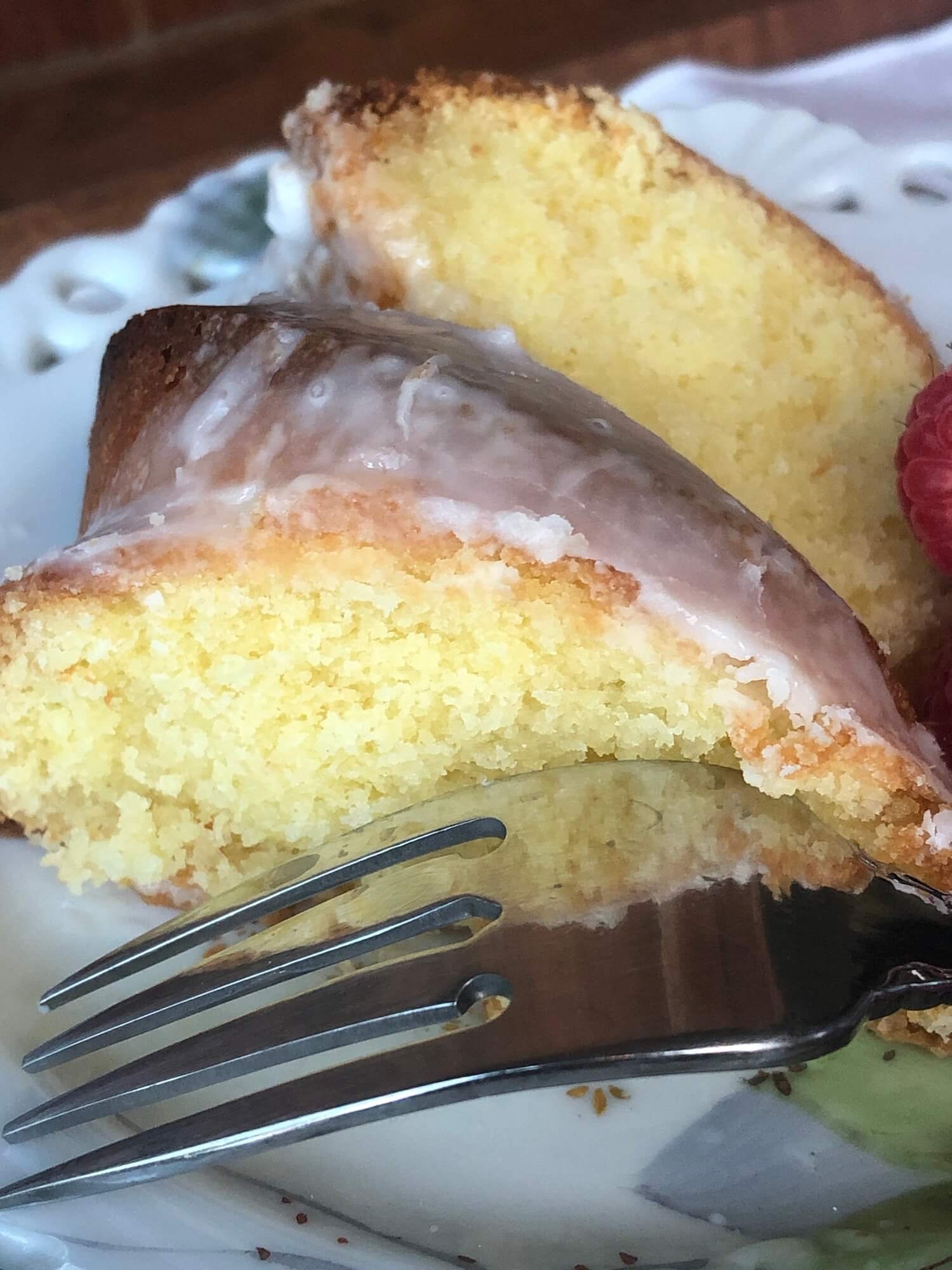One of the quintessential flavors of spring seems to be lemon. I’m not sure why. Maybe it is because lemons are a sunny yellow springy color reminiscent of the early spring flowers here…forsythia, tulips and jonquils. Or maybe because it is refreshingly citrusy for warmer days. In any case, now that it is March, I’d like to encourage spring along a bit, so bring on the lemons!
Please note: this post contains affiliate links meaning I may make a small commission on any purchases at no additional cost to you. Links are highlighted in teal.
One of our go-to lemon recipes is this addictive and versatile lemon cake. EVERYONE that tries it, loves it. It is not as impressive looking as some of the showier frosted cakes, but it is absolutely delicious. And easy!
Limoncello glaze on lemon tea cake
It is flexible too. The recipe can be easily doubled or tripled depending on what I am baking it in. The original recipe calls for a smallish 8” loaf pan. I have a larger shaped loaf pan that creates a cake embossed with lemons , and a swirl top silicone ring pan (flexible silicone makes it easier to extract without damage), and mini bundt pans or baby loaf pans I use when I am baking it to include in gift baskets…that is if I can hide it from my family long enough!
If you don’t have a microplane grater, you absolutely need to stop what you are doing and go order one right now! This makes grating anything, but especially citrus, SOOOO much easier! Adapted from the woodshop for kitchen use, this is the best kitchen tool! No more grated knuckles, or hunting for citrus with appropriately bumpy rinds to make them easier to grate…
The basic cake gets its lemony goodness from lemon rind in the batter and lemon sugar syrup poured over the warm cake before it is removed from the pan. I always use twice as much syrup as called for…my baking mantra “If some is good, more is better” kicks in! This makes a really tasty and moist cake, but also makes it a bit more fragile, which is tricky with an intricately shaped pan. For these, I remove the cake from the pan before infusing it with syrup.
Once cooled, the cake can be simply dusted with powdered sugar to enhance any embossed details, or topped with a lemon glaze for more lemony, sugary goodness. For powdered sugar that doesn’t melt and disappear, I like to use this non melting sugar.
For adult consumption, a glaze (or even the syrup) made with limoncello is a fun twist to try. To make a glaze, use ~1/2 cup of powdered sugar and mix in liquid (milk, lemon juice, or liqueur) a teaspoon at a time until it reaches pouring consistency.
Candied lemon peel strips are another garnishing idea.
Serve it on its own, or sliced and topped with a dollop of fresh whipped cream and a few raspberries. It is an excellent treat for afternoon tea, or as a dessert anytime!
Our Favorite Lemon Tea Cake Recipe
Adapted from Mrs Pettigrew’s Lemon Cake in Having Tea
Ingredients
2 lemons
3/4 c sugar
8 Tbsp (1 stick) salted butter, softened
2 large eggs, beaten
3/4 c flour
6 Tbsp milk
3 Tbsp sugar, for topping
Directions
Preheat oven to 325ºF
Grease and line an 8” loaf pan with parchment (or if using a fancy shaped pan grease liberally with Wiltons cake release spray)
Grate the lemon rinds and set aside
Combine the juice of 1 lemon with 3 Tbs sugar in a bowl and set in a warm place until the sugar dissolves and forms a syrup with the juice (I always double this)
In the bowl of an electric mixer fitted with a paddle attachment, cream together butter and sugar until light and fluffy.
Add the beaten eggs a little at a time, beating well after each addition.
Toss the grated lemon rind with the flour and add to butter mixture. Beat thoroughly (the longer you beat, the softer the cake).
Add the milk and beat again.
Pour into the prepared pan and bake for at least 1 hr. The cake should spring back when pressed gently in the center.
Immediately after removing from oven, prick the top all over with a thin skewer and pour the lemon syrup over the cake until completely covered.
Cool in pan allowing the syrup to soak into the cake.
Enjoy!
Other posts you might enjoy:










